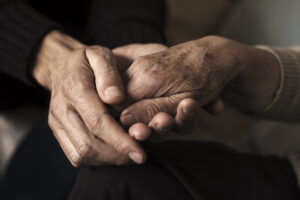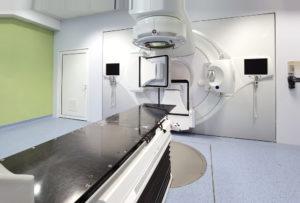This blog post discusses whether repeating radiotherapy for Dupuytren’s or Ledderhose disease should be done. I have tried to keep in mind the overriding principle of “first do no harm”, while allowing re-irradiation in certain defined circumstances. This post is aimed both towards patients and radiation oncologists.
Radiotherapy is effective at the prevention of contracture and at reducing the need for surgery in patients with early Dupuytren’s disease of the hand i.e. where there is no contracture (straight fingers) or where there is minimal contracture (up to 10 degrees). Generally, only patients with progressive disease would be treated, in other words those that have noticed a change over the last 6 – 12 months e.g. growth of nodules, formation of new nodules, formation/extension of cords. Trials show us that in those who are treated with radiotherapy, only 20% get further progression. Similarly, on the feet (Ledderhose disease), only about 20% of patients who are treated with radiotherapy do not get relief.
Now, that is a pretty good result, but what about those 20% who get further growth of disease?

These patients can be split into groups:
- Where there is progression outside of the area that was treated with radiotherapy, for instance on another hand/foot, or on another part of the same hand/foot. These can safely be treated, as the area has not been treated before.
- Where there was no effect of radiotherapy on the initial treatment, or there is early growth within the same area (for instance within one year of treatment). These patient are unlikely to benefit from further radiotherapy to the same area.
- Where there was an initial effect of radiotherapy, but there was growth a number of years afterwards in the area that received radiotherapy, or at the edge of the radiation field: These are those that I would carefully consider re-treatment.
Let’s look at group 3 more carefully:
The criteria which I propose to decide on further treatment are:
- A good initial response – it seems likely that this could predict for further response upon repetition of radiotherapy.
- Initial side-effects were not too severe e.g. blistering, ongoing soreness. If they were, then it would seem likely that re-irradiation would cause even more severe side-effects – both acute (e.g. soreness, blistering) and chronic (e.g. subcutaneous fibrosis).
- A long time period between the initial treatment and the further treatment. Not sure how long is “long”, but I would have thought that two years may be a reasonable figure. This is because there is known to be repair in the normal tissue (i.e. skin, subcutaneous tissues) over time, and therefore repair in the ability of these tissues to withstand further radiotherapy without getting more severe side-effects.
The technical radiotherapy issues for radiation oncologists:
- Always refer carefully to the previous radiotherapy field, dose/fractionation, modality (electrons/orthovoltage) and energy. If you do not have this information then it would be wise to leave the re-irradiation to the original treating centre.
- Where the active disease overlaps the previous radiation field, use a very tight margin e.g. 0 – 5 mm rather than 15 – 20 mm to define the edge of the planning target volume.
- Dose e.g. 15Gy in 5 fractions over one week, and stop there. Or perhaps even to fractionate further (e.g. 2 Gy per fraction). In my opinion, this has a reasonable balance between response and likelihood of side-effects.
Conclusion
It is important to note that there is no information in the literature on this, and so we have no idea whether re-treatment ever induces a meaningful or long-lasting response, or whether side-effects are generally acceptable in the long-term. So the above only represents what I believe to be radiation oncology “common-sense”.
Clearly, this is just my opinion, and other radiation oncologists will decide for themselves about re-irradiation for Dupuytren’s and Ledderhose disease. They will also take the individual patient’s circumstances into account, but I hope it represents a useful framework for making that decision.




